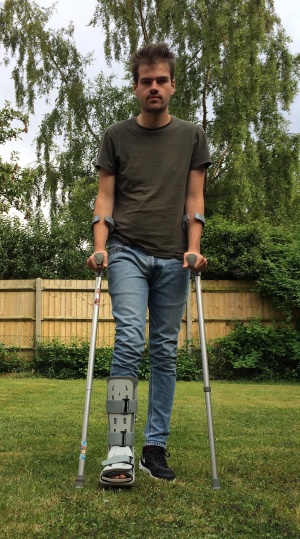Walking Aids
Original Editor - The Open Physio project.
Top Contributors - Admin, Lauren Lopez, Kim Jackson, Ammar Suhail, Redisha Jakibanjar, Lucinda hampton, Natalie Patterson, Tolulope Adeniji, Rachael Lowe, Naomi O'Reilly, WikiSysop, Karen Wilson and Amanda Ager
Introduction[edit | edit source]
Walking aids are sometimes also reffered to as ambulatory assistive devices. A walking aid is one of several devices a patient may be issued in order to improve their walking pattern, Balance or safety while mobilising independently. They can also be a means of transferring weight from the upper limb to the ground, in cases where reducing weight bearing through the lower limb is desired.
Walking aids fall into multiple categories (single- and multipoint, tripod or quadruped) and include the following:
The tip of each should have a rubber Ferrule to prevent the walking aid from slipping, with some ferrules being depressed to form a vacuum when it comes into contact with the ground. The ferrule should not be worn or cracked and should fit well onto the point of the walking aid.
Descriptors of Weight Bearing Status[1][edit | edit source]
Prescription of an appropriate walking aids requires knowledge of weight bearing prescribed to the patient or being allowed by the problem he or she is having. Common weight bearing status are being described as following
- Full weight bearing(FWB): There are no restrictions and client can bear 100% body weight on the lower extremities(LE).
- Non-weight bearing(NWB): No weight is borne on the involved limb
- Partial weight bearing(PWB): Client is allowed to bear only a portion of body weight on lower extremities. It is sometimes expressed as a percentage of body weight (example 20% to 70%)
- Toe touch weight bearing(TTWB): Only the toes of the affected extremity contact the floor to improve balance
- Weight bearing as tolerated(WBAT): Weight bearing is limited by patient tolerance of weight borne on extremity.
References[edit | edit source]
- ↑ O'Sullivan SB, Schmitz TJ, Fulk G. Physical rehabilitation. FA Davis; 2013 Jul 23.







